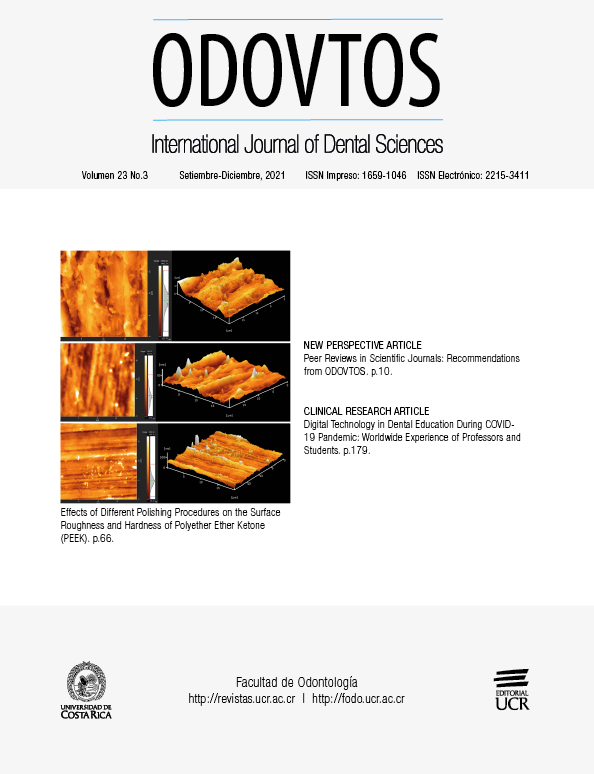Abstract
The objective of this study was to assess the use and experience with digital communication tools among dentistry professors and students to adapt to distance learning during the Covid-19 pandemic. Nine hundread and ninety five participants (479 dentistry professors and 516 students) from countries in North America, Latin America, Brazil, Europe, Asia, Oceania, and the Middle East answered a questionnaire about motivation/stress/anxiety; practice with digital technologies; synchronous/asynchronous communication technologies (difficulties/benefits), and which ones would they prefer using when returning to college. Data were analyzed by the Chi-square test and Fisher's exact (α=0.05). Motivation was more affected among the female professors, male students, and Brazilians (p<0.05). Concern about the academic future, was higher among female students, up to 30 years old, from Latin America and Brazil, and lower for European professors (p<0.05). Anxiety and stress were higher for undergraduate students up to 20 years old from Latin America and Brazil (p<0.05). European professors used more synchronous videoconferencing services for lectures/questions, while Brazilians used more text messaging applications for answering questions (p<0.05). Latin American professors used more surveys for evaluation (p<0.05). Brazilian professors indicated that they would use "online meetings" and "survey administration services" when returning to face-to-face activities and European professors/students would use "email" (p<0.05). Professors from Asia/Oceania/Middle East and professors/students from Brazil indicated "remote activities were important for students not to be inactive" (p<0.05). Efforts were made to adapt Dentistry's teaching to distance learning during the COVID-19 pandemic. However, the technologies used for this, feelings, and experiences differed between professors and students.


